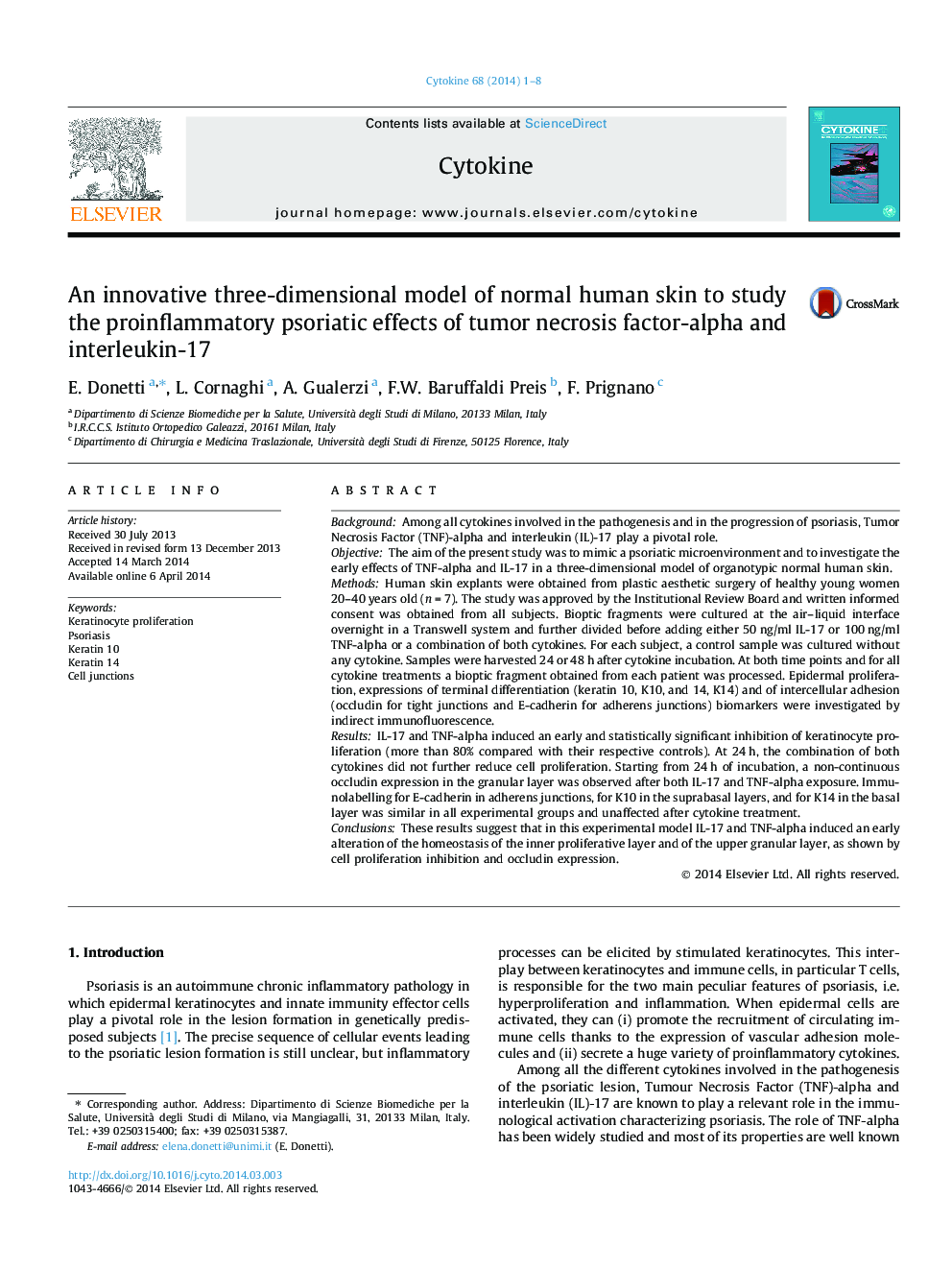| کد مقاله | کد نشریه | سال انتشار | مقاله انگلیسی | نسخه تمام متن |
|---|---|---|---|---|
| 2794296 | 1155263 | 2014 | 8 صفحه PDF | دانلود رایگان |
• This study was aimed at mimicking in vitro a psoriatic microenvironment.
• We used a three-dimensional model of organotypic human skin cultures.
• Tumor necrosis factor-alpha and interleukin-17 were added to the culture medium.
• A decrease of epidermal proliferation was induced by both proinflammatory cytokines.
• No synergistic effects on cell proliferation were found with the co-administration of both cytokines.
BackgroundAmong all cytokines involved in the pathogenesis and in the progression of psoriasis, Tumor Necrosis Factor (TNF)-alpha and interleukin (IL)-17 play a pivotal role.ObjectiveThe aim of the present study was to mimic a psoriatic microenvironment and to investigate the early effects of TNF-alpha and IL-17 in a three-dimensional model of organotypic normal human skin.MethodsHuman skin explants were obtained from plastic aesthetic surgery of healthy young women 20–40 years old (n = 7). The study was approved by the Institutional Review Board and written informed consent was obtained from all subjects. Bioptic fragments were cultured at the air–liquid interface overnight in a Transwell system and further divided before adding either 50 ng/ml IL-17 or 100 ng/ml TNF-alpha or a combination of both cytokines. For each subject, a control sample was cultured without any cytokine. Samples were harvested 24 or 48 h after cytokine incubation. At both time points and for all cytokine treatments a bioptic fragment obtained from each patient was processed. Epidermal proliferation, expressions of terminal differentiation (keratin 10, K10, and 14, K14) and of intercellular adhesion (occludin for tight junctions and E-cadherin for adherens junctions) biomarkers were investigated by indirect immunofluorescence.ResultsIL-17 and TNF-alpha induced an early and statistically significant inhibition of keratinocyte proliferation (more than 80% compared with their respective controls). At 24 h, the combination of both cytokines did not further reduce cell proliferation. Starting from 24 h of incubation, a non-continuous occludin expression in the granular layer was observed after both IL-17 and TNF-alpha exposure. Immunolabelling for E-cadherin in adherens junctions, for K10 in the suprabasal layers, and for K14 in the basal layer was similar in all experimental groups and unaffected after cytokine treatment.ConclusionsThese results suggest that in this experimental model IL-17 and TNF-alpha induced an early alteration of the homeostasis of the inner proliferative layer and of the upper granular layer, as shown by cell proliferation inhibition and occludin expression.
Journal: Cytokine - Volume 68, Issue 1, July 2014, Pages 1–8
